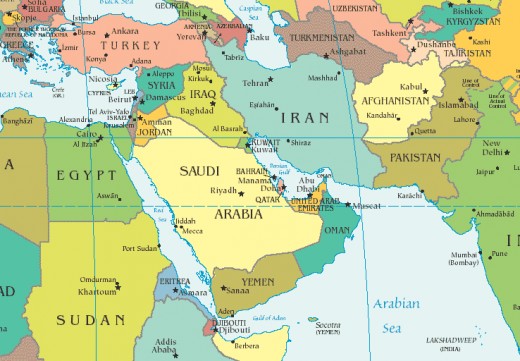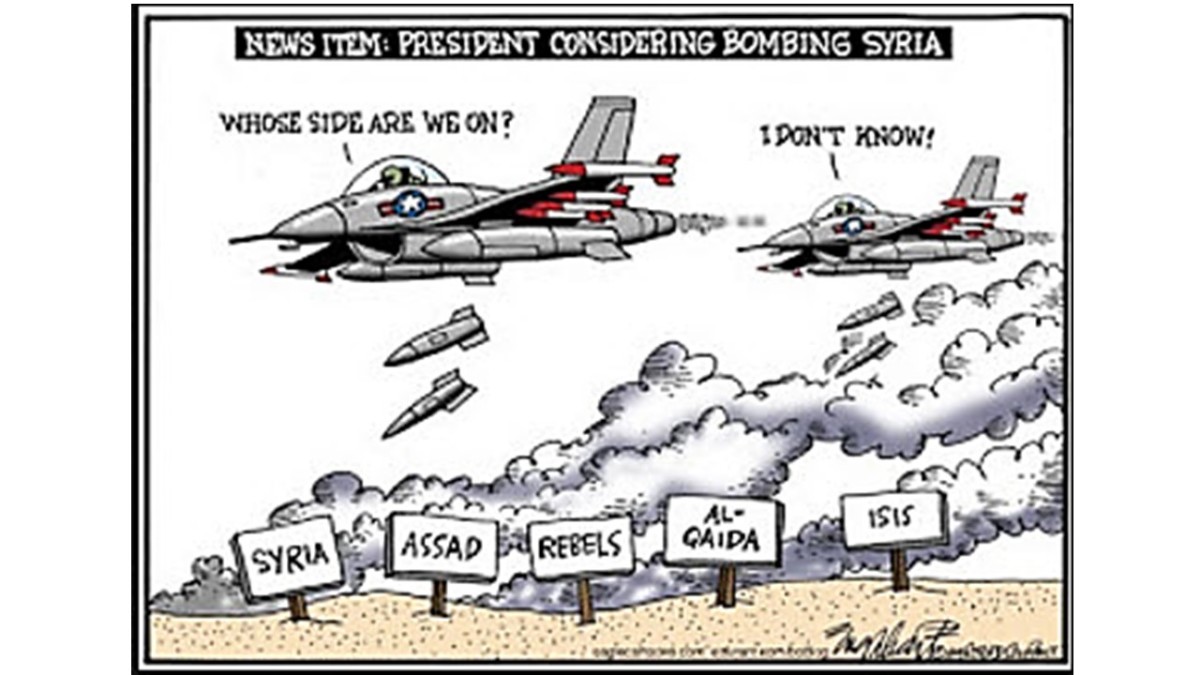Understanding Conflict in the Middle East
The Middle East

The Concept of Understanding
I wanted to understand the seemingly endless conflict in the Middle East. Mainstream news only confused me with terminology I didn’t understand. Writing about something I don’t understand has always been a great way for me to learn and the concept is simple enough. I choose a topic, do the research, and write about what I have learned. The result is an informative and well organized article that provides clear and concise answers for the reader. Yeah, it sounds good in theory, doesn’t it?
It has always worked for me until now. After countless hours of researching my subject, I am as much in the dark as when I started. Read on and I think you’ll understand how I came to understand what I didn't expect to learn while researching the conflict in the Middle East.
Geography
Each day I turn on the news and I hear report after report about the conflict in the Middle East. I hear the names of geographical regions for which I have no visual recall. I hear about:
- Qatar
- Egypt
- Libya
- Chad
- South Sudan
- Yemen
- Syria
- Afghanistan
- Somalia
- Pakistan
- Iran
- Iraq
The list goes on an on. After thirteen years of war in Iraq, I finally have a basic understanding of the relationship of these areas on the map but little else about the individual areas.
Ethnic Groups
Buried in those same broadcasts are the names of ethnic groups that I don’t understand. I hear words such as”
- Arabs and Kurds
- Pashtuns and Jews
- Tats and,Assyrians
- Armenians, and Turks
And again, the list goes on and on and my understanding of the individual groups could fit on the head of a straight pin.
Extreme Militant Groups
Dominating the news are the names of militant groups in the Middle East. It was my understanding that we sent our troops to Iran to fight Al Qaeda. So what is the Taliban and what is I.S.I.S and I.S.I.L.? Who are the Hamas and Hezbollah? Are these all considered Islamic Jihadist and, what does that mean?
Oh yes, I remember. Do You? Read More.
- 911 - I Will Remember!
911 - The attack on the World Trade Center. the Pentagon, and an airplane. It was an attack on our country and none living will ever forget September 11, 2001. the day that changed us forever.
Look Back To When It All Began
When I woke up on the morning of September 12, 2001, I knew without doubt that the good old United States of America was going to kick someone’s butt for the horror we experienced just hours earlier on what would come to be known as 911. None of us would ever forget where we were when we heard that two planes had crashed into the World Trade Center, one into the Pentagon, and one in a field in Shanksville, PA. No, we will always remember.
The cost to our troops
- Wounded Warrior - Pain and Pride
Pain and pride go hand in hand for the wounded warriors of the US Military. Many just need a warm hug, a smile, or an encouraging word to begin their recovery. Don't we owe them that?
The Cost of the Conflict in the Middle East
Over the next thirteen years, I understood that we were at war with Iraq and that Al Qaeda was responsible for the worst event of my lifetime to occur on U.S. soil. In time I understood that some idiot named Osama bin Laden, was the mastermind and that he had to die. As much as I hated to see our troops sent to the Middle East, I understood and was grateful that we had the power and skills to execute such an operation. As time went on, my understanding would diminish in bits and pieces. Once Osama bin Laden was killed in his compound, I wanted our men and women to come home. In my opinion, the problems in the Middle East weren’t our problem any more.
For thirteen years our troops endured repeated deployments. Many left their families struggling just to make ends meet while one or both parents were fighting a war that most of us thought couldn’t be won. Our military and civilian hospitals began to fill up with soldiers who had traumatic head injuries, lost limbs, and post traumatic stress disorder (PTSD). As of September 8, 2014, the Department of Defense reports that here have been 6,684 military deaths as a result of the war in Iraq. They report that 52.224 have been wounded. So much pain and suffering and Al Qaeda is alive and well and, the least of our worries.
Failure
The years have gone by and our troops were finally coming home. The end was in sight. But there is no shortage of hatred and violence in the Middle East. Over the course of thirteen years I have come to understand that Iran and Iraq sit side by side on a map and that Afghanistan and Pakistan are their neighbors to the East. I now know that Saudi Arabia is on their southern border and Egypt and Libya are neighbors to the West. I understand that oil rich land and greed are in large part responsible for the greed and hostility between countries in the Middle East. And, I understand that it is a primary interest for the United States as well. I understand it but I don’t have to like it.
I had intended to research all the ethnic and militant groups in the Middle East. I thought it would help me understand why there is so much hatred and violence in an area so rich in resources. I was naïve, perhaps teetering on ignorant to think it could be done. I quickly learned that among all the groups, there are more similarities than differences but as minuscule as their differences are, they are the obstacles to bringing peace to the Middle East. The differences are rooted in religion, ideology, tradition, folklore, and class. There are no simple solutions for ending the conflict among such a diverse group of people and philosophies.
What I Learned From My Research on the Conflict in the Middle East
My original outline for this article included a discussion on what I had learned about the militant groups in the Middle East. I have changed my mind. I will not justify their existence by giving them more attention. I cannot wrap my brain around their lack of conscience and total disregard for human life and so I choose not to pursue my understanding of them. Instead, I will remind myself that there are good people in the Middle East who are living a nightmare at the hands of their own. Our men and women of the Armed Forces have sacrificed so much in an attempt to train soldiers to defend the rights of those good people to live in peace. Sadly, after all these years, they appear unable to do so. Enough is enough. It’s time to bring them home and let the will of the people prevail in the Middle East.
My project here is not a complete failure. Although I cannot understand the conflict in the Middle East but this I do know. When the people are divided, chaos and tragedy are the result. Perhaps we, as citizens of the greatest country in the world, should pay attention to that and learn the lesson before it is too late.
Article Resources
United States Department of Defense
Wikipedia, Ethnic Groups in the Middle East
© 2014 Linda Crist









